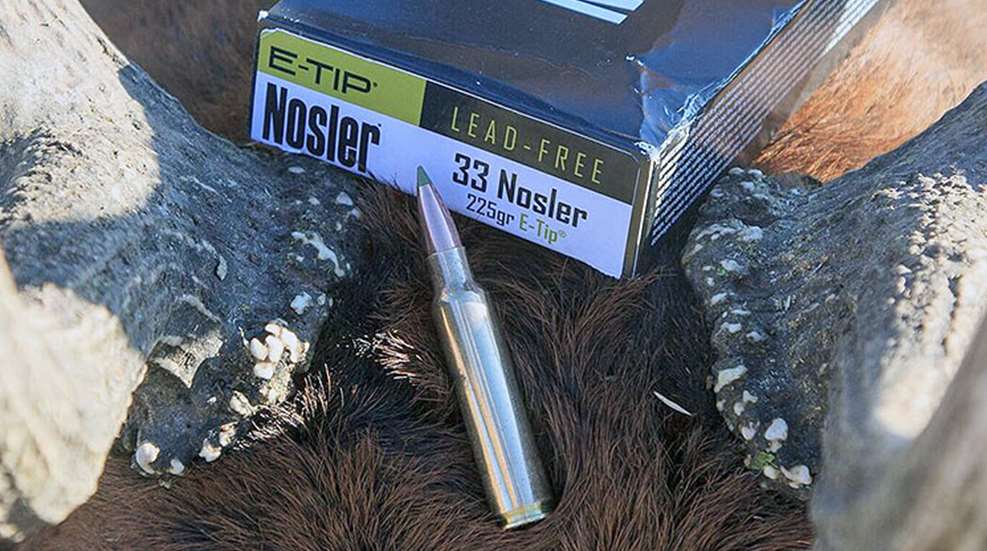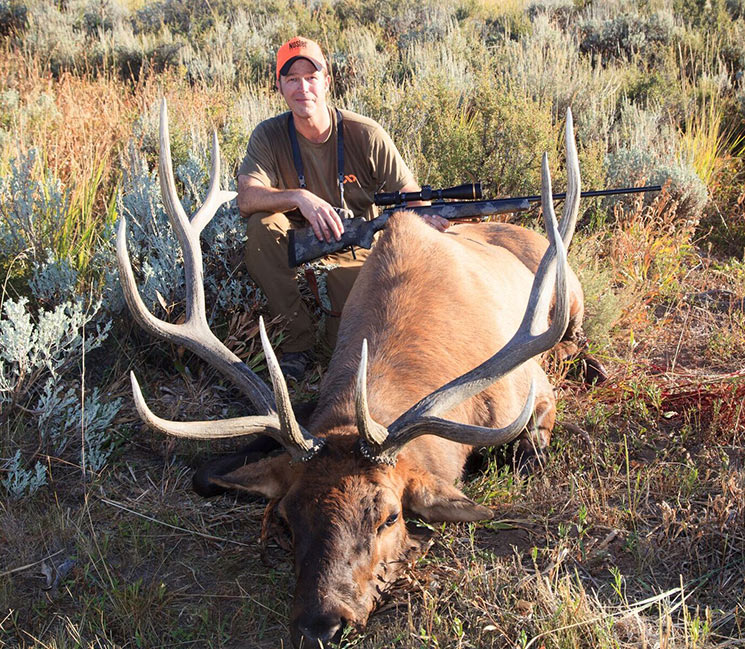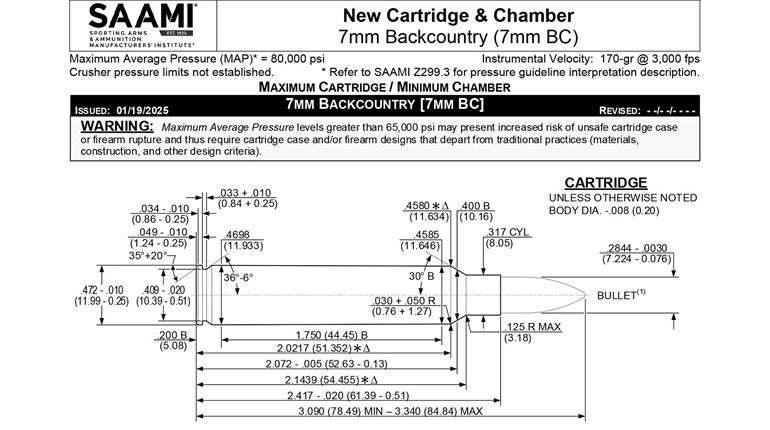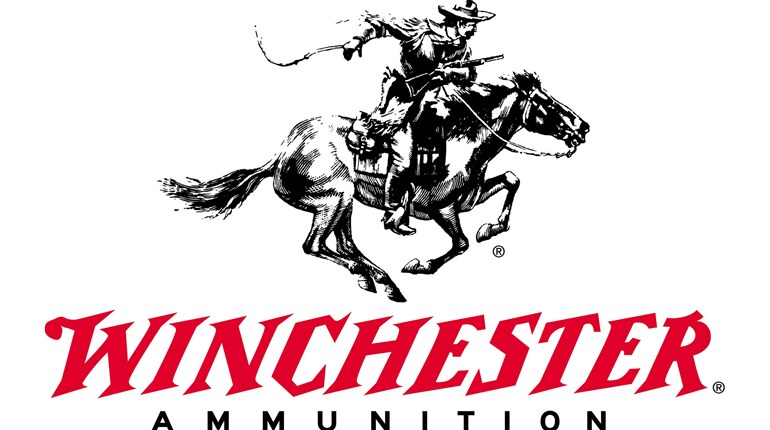
The bull was broadside and we were about out of cover. He was an old one, his hide was stained black from the wallow and his thick antlers carried their mass the length of his main beams. His chestnut face had the trademark forehead hump of a big, mature bull. We found a flat spot on the hillside and I built a rock-steady rest in the seated position with a set of folding sticks under the rifle’s forend and my daypack wedged under my armpit. The range was 358 yards and there was no wind to speak of—I dialed for the vertical drop and held the duplex reticle of the Leupold VX-6 HD low on his shoulder. I didn’t feel the recoil and my ears barely registered the significant muzzle blast. The shot rocked him; he was dead on his feet. But I’ve seen too many "dead" animals lead me on long blood trails so I sent another round his way. He was on the ground within five seconds of the first shot and never took a step. The cartridge was the 33 Nosler and the bullet was the new 225-grain E-Tip.
Before we dig too far into the weeds on this topic, I’m going to nibble on some crow: not a huge bite, mind you, but maybe a taste of the drumstick. You see, I once wrote a piece for this very website titled "Who Needs a Magnum?" I stand by everything I wrote in that article, with the caveat that powerful cartridges are useful in certain roles if the hunter can learn to shoot them well. My own personal journey had settled me on the 7mm Rem. Mag. with 175-grain Nosler Partitions as my go-to elk cartridge and, though there is a "magnum" on the headstamp of that cartridge, it is a pretty polite cartridge in terms of recoil and "shootability" and is sort of a magnum in name-only. This fall, I got the chance to hunt elk in northern Utah with the Nosler crew and I decided to give their most powerful cartridge, the 33 Nosler, a chance to prove me wrong.
The long-time bullet maker introduced its own line of cartridges in 2014, starting with the 26 Nosler. The 26 Nosler is a 6.5mm/.264” cartridge based on the beltless .404 Jeffery case and the round was an instant hit. The success of the 26 Nosler led to an expansion in the lineup and now we have the 28 Nosler (7mm), 30 Nosler (.30 caliber), and the .33 Nosler (.338) to choose from. The 33 Nosler, the largest of the group, gives hunters significantly-increased velocities over the .338 Win. Mag. and even bests the .340 Wby. The Nosler factory ammunition that I used on the Utah bull pushed the company’s lead-free 225-grain E-Tip at an honest 2975 fps according to my own LabRadar Chronograph and the 225-grain Accubond load reaches 3025 fps. Even with a heavy-for-caliber 250-grain bullet one can achieve 2850 fps of velocity with this cartridge. So, what does that mean in the real world? It means that we have a rifle that more or less mimics the flat trajectory of the .270 Win. with the bullet mass and frontal area of a .338 Win. Mag. Nothing to sneeze at.
As I stressed in my earlier piece, there are no free lunches in physics: the 33 Nosler’s power comes at a price in-terms of recoil. Without a muzzle brake, the 33 is no fun at all to shoot from the bench or prone, though it’s manageable in field positions and you’d likely never notice the recoil with a big bull in your crosshairs. Still, there’s nothing more useless than a powerful cartridge that a hunter is scared of. With a brake, however, the 33 is quite manageable to shoot—pleasant, even. Sure, it makes lots of noise and scares the crap out of everyone on the range, but it doesn’t really punish the shoulder. The Nosler M48 Long Range weighs right at 9 pounds scoped and I was able to shoot 20+ rounds per range session without discomfort. Brakes are loud and some folks can’t stand them but there’s little question that they work. Hunting with the brake meant taking a second to put my ear plugs in before I pulled the trigger on that bull but, fortunately, I had plenty of time to do so.
So, in the spirit of consistency, who needs a 33 Nosler? Well, no one needs one—it has been proven over and over again that one can just about hunt the world with a .270 or a .30-06 with good bullets so long as we aren’t going after the bigger half of the big five. Still, that doesn’t mean that powerful cartridges such as the 33 Nosler don’t offer real advantages on larger game animals. If you are a serious elk hunter, the 33 Nosler would be hard to beat. The same goes for hunters heading north into Canada or Alaska for moose or the big bears. One could even make the case that heading into dangerous game country to hunt non-dangerous game warrants a big gun with big bullets in-case of an unintentional encounter. I hunted sheep in Alaska this fall and I’ll admit that my little Kimber .308 felt pretty small when we were stepping over grizzly tracks in the alder-choked river bottoms. The 33 Nosler would be an absolute hammer on large African plains game including eland, zebra, wildebeest and kudu.
So back to our where our story began, on that sage flat in Utah. Nosler’s 225-grain E-Tip smashed the 16-year-old bull’s shoulder, crossed through both lungs and came to rest against the hide on the opposite side of the animal. The bullet looks like it came out of an advertisement and retained 223.8 grains of its weight, which must mean that the polymer tip weighed 1.2 grains. I watched a video of another hunter in camp who shot a bull with a 225-grain Accubond and it dropped so fast it looked like it had been struck by lightning. The elk were definitely impressed by the 33 Nosler.
I haven’t changed my mind that many hunters are best-served by mild-recoiling cartridges that they shoot well—especially those who aren’t willing to spend the necessary range time to master larger cartridges. Most hunters aren’t hunting elk, moose, bears or eland, though, and those animals can weigh several times more than the average whitetail. If big animals are on the menu, particularly at ranges over 300 yards, and you’re honest about your ability to handle the recoil, bigger is better.




































